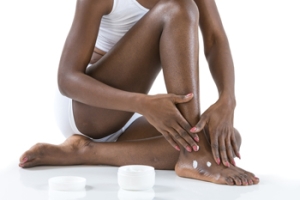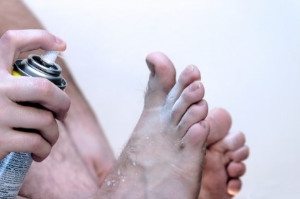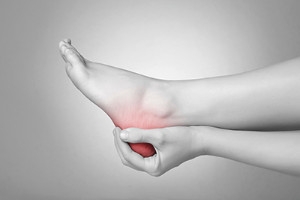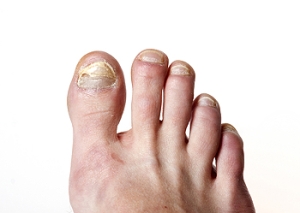
Five Tips for Everyday Foot Care
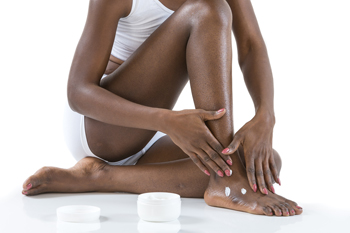 As the foundation of your body, your feet play an important role in helping you go about your day. But despite their importance, we often neglect our feet, increasing our risk of developing various foot problems. Taking small steps every day to care for your feet can help keep them healthy. Wearing comfortable, properly fitted shoes can help prevent problems such as hammertoes, corns, calluses, blisters, ingrown toenails, and general foot pain. Wearing socks can keep excess moisture off your feet, and pad the foot, preventing excess wear and tear. Taking walks regularly helps strengthen the muscles of the feet. Finally, washing and drying the feet thoroughly can help prevent foot odor and fungal infections, while moisturizing the feet can prevent dry and cracked heels. For more information about everyday foot care, please consult with a podiatrist.
As the foundation of your body, your feet play an important role in helping you go about your day. But despite their importance, we often neglect our feet, increasing our risk of developing various foot problems. Taking small steps every day to care for your feet can help keep them healthy. Wearing comfortable, properly fitted shoes can help prevent problems such as hammertoes, corns, calluses, blisters, ingrown toenails, and general foot pain. Wearing socks can keep excess moisture off your feet, and pad the foot, preventing excess wear and tear. Taking walks regularly helps strengthen the muscles of the feet. Finally, washing and drying the feet thoroughly can help prevent foot odor and fungal infections, while moisturizing the feet can prevent dry and cracked heels. For more information about everyday foot care, please consult with a podiatrist.
Everyday foot care is very important to prevent infection and other foot ailments. If you need your feet checked, contact one of our podiatrists from PA Foot & Ankle Associates. Our doctors can provide the care you need to keep you pain-free and on your feet.
Everyday Foot Care
Often, people take care of their bodies, face and hair more so than they do for their feet. But the feet are a very important aspect of our bodies, and one that we should pay more attention to. Without our feet, we would not be able to perform most daily tasks.
It is best to check your feet regularly to make sure there are no new bruises or cuts that you may not have noticed before. For dry feet, moisturizer can easily be a remedy and can be applied as often as necessary to the affected areas. Wearing shoes that fit well can also help you maintain good foot health, as well as making it easier to walk and do daily activities without the stress or pain of ill-fitting shoes, high heels, or even flip flops. Wearing clean socks with closed shoes is important to ensure that sweat and bacteria do not accumulate within the shoe. Clean socks help to prevent Athlete’s foot, fungi problems, bad odors, and can absorb sweat.
If you have any questions please feel free to contact one of our offices located in Allentown, Easton, Northampton, and Chew Street in Allentown, PA . We offer the newest diagnostic and treatment technologies for all your foot and ankle needs.
Every Day Foot Care
Our feet are important in our everyday lives. The problem is that we tend to neglect them. When this becomes a habit, it can cause significant trouble. Ignoring foot problems can mean pain, limited mobility, and expensive doctor's visits. On the other hand, if feet are cared for and looked after regularly, they will perform without pain or complication.
Routine hygiene is the most basic way to care for the feet. Wash and dry them thoroughly daily. Remember to get between the toes and keep the toenails trimmed and short. If the feet feel dry or there are signs of dryness or cracking, use a moisturizer designed for the feet.
When using moisturizer on the feet, try to avoid applying between the toes. If cream or lotion sits too long, they can cause fungal and bacterial growth. When moisturizer is used between the toes, it can also cause the skin to soften too much.
Shoes are also an important aspect of foot care. When one is picking out shoes, make sure they are the correct size. Shoes need to be snug, but not too tight. On the other hand, if shoes are too loose they can cause foot problems as well. It is highly recommended that shopping for new shoes be done later in the day. The reason for this is that the feet will have settled and swelled to their full size by then. To keep your feet at their most healthy, avoid wearing high heels or flip flops too often. Instead, choose shoes that are good for your feet. Good shoes pad the soles of your feet and support the arches and ankles.
Socks should also be worn daily with closed-toe shoes. They may feel hot during the summer months, but they absorb sweat and moisture off the feet. Without socks, the build-up of sweat in a closed-toe shoe can cause fungal problems and athlete's foot.
The best thing to remember in every day foot care is that shoes do make a difference. If you spend a lot of time on your feet, make sure that your shoes show no signs of wear. Shoes should offer ample support for the arches and the overall foot. Additionally, try to make foot cleaning and maintenance a daily habit. If you keep these things in mind, your feet will stay healthy and safe.
How Can You Catch Athlete's Foot?
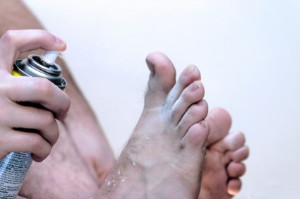 Athlete’s foot is a fungal infection of the skin on the feet. It can cause the skin to become dry, scaly, and itchy, and in more severe cases can cause skin peeling, blistering, and pain. Athlete’s foot is contagious and can be spread through both direct and indirect contact with a contaminated surface or an infected person. The fungus that causes athlete’s foot thrives in warm and moist environments. Places like public swimming pools, locker rooms, and showers can be a breeding ground for the fungus. It is best to wear shoes when walking in these areas. You can also catch athlete’s foot by sharing personal items, such as towels, shoes, and socks, with an infected person. For more information about athlete’s foot, consult with a podiatrist today.
Athlete’s foot is a fungal infection of the skin on the feet. It can cause the skin to become dry, scaly, and itchy, and in more severe cases can cause skin peeling, blistering, and pain. Athlete’s foot is contagious and can be spread through both direct and indirect contact with a contaminated surface or an infected person. The fungus that causes athlete’s foot thrives in warm and moist environments. Places like public swimming pools, locker rooms, and showers can be a breeding ground for the fungus. It is best to wear shoes when walking in these areas. You can also catch athlete’s foot by sharing personal items, such as towels, shoes, and socks, with an infected person. For more information about athlete’s foot, consult with a podiatrist today.
Athlete’s foot is an inconvenient condition that can be easily reduced with the proper treatment. If you have any concerns about your feet and ankles, contact one of our podiatrists from PA Foot & Ankle Associates. Our doctors will treat your foot and ankle needs.
Athlete’s Foot: The Sole Story
Athlete's foot, also known as tinea pedis, can be an extremely contagious foot infection. It is commonly contracted in public changing areas and bathrooms, dormitory style living quarters, around locker rooms and public swimming pools, or anywhere your feet often come into contact with other people.
Solutions to Combat Athlete’s Foot
- Hydrate your feet by using lotion
- Exfoliate
- Buff off nails
- Use of anti-fungal products
- Examine your feet and visit your doctor if any suspicious blisters or cuts develop
Athlete’s foot can cause many irritating symptoms such as dry and flaking skin, itching, and redness. Some more severe symptoms can include bleeding and cracked skin, intense itching and burning, and even pain when walking. In the worst cases, Athlete’s foot can cause blistering as well. Speak to your podiatrist for a better understanding of the different causes of Athlete’s foot, as well as help in determining which treatment options are best for you.
If you have any questions please feel free to contact one of our offices located in Allentown, Easton, Northampton, and Chew Street in Allentown, PA . We offer the newest diagnostic and treatment technologies for all your foot and ankle needs.
Athlete's Foot
Athlete’s foot is an extremely contagious infection caused by a fungus that results in itching, burning, dry, and flaking feet. The fungus that causes athlete’s foot is known as tinea pedis and thrives in moist, dark areas such as shower floors, gyms, socks and shoes, commons areas, public changing areas, bathrooms, dormitory style houses, locker rooms, and public swimming pools. Athlete’s foot is difficult to treat as well because of the highly contagious and recurrent nature of the fungus.
Tinea is the same fungus that causes ringworm, and is spread by direct contact with an infected body part, contaminated clothing, or by touching other objects and body parts that have been exposed to the fungus. Because the feet are an ideal place for tinea to grow and spread, this is the most commonly affected area. It is, however, known to grow in other places. The term athlete’s foot describes tinea that grows strictly on the feet.
The most commonly infected body parts are the hands, groin, and scalp, as well as the feet. Around 70% of the population suffer from tinea infections at some point in their lives, however not all of these cases are athlete’s foot. Just like any other ailment, some people are more likely to get it than others, such as people with a history of tinea infections or other skin infections, both recurring and non-recurring ones. The extent to which a person experiences regrowth and recurrent tinea infections varies from person to person.
Sometimes people will not even know that they are infected with tinea or that they have athlete’s foot because of a lack of symptoms. However, most experience mild to moderate flaking, itching, redness, and burning. However, some of the more severe symptoms include cracking and bleeding skin, intense itching and burning, pain while walking or standing, and even blistering.
Because of the recurring nature of the tinea fungus and the athlete’s foot it causes, the best way to treat this condition is with prevention. You can take some preventative measures such as wearing flip flops or sandals in locker rooms and public showers to reduce contact with the floor. It also helps to keep clean, dry feet while allowing them to breathe. Using powders to keep your feet dry is a good idea, as well as keeping your feet exposed to light and cool air, to prevent the growth of tinea. If you do happen to get athlete’s foot, opt for using topical medicated creams, ointments or sprays. These treatments help eliminate and prevent it from coming back.
Different Types of Heel Pain
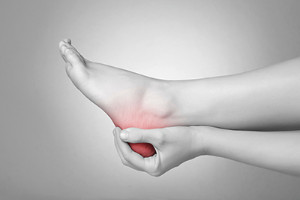 Heel pain affects roughly 1 out of every 10 people in the world, particularly runners and those between the ages of 40 and 60. Heel pain generally builds up and worsens over time, and most commonly it is a result of damage to the plantar fascia. The plantar fascia is the band of tissue that runs along the sole of the foot and connects the heel bone to the toes. Any damage, whether it is sudden or reoccurring over time, will cause the plantar fascia to thicken, along with the surrounding tissues and heel bone. This is known as plantar fasciitis. Other less common sources of heel pain include stress fractures, bursitis, wearing of the fat pad under the heel, or a heel spur. If you are suffering from heel pain, it is important to consult with a podiatrist to receive a proper diagnosis. Once the source of the pain is determined, your podiatrist will be able to provide treatment options for your specific condition.
Heel pain affects roughly 1 out of every 10 people in the world, particularly runners and those between the ages of 40 and 60. Heel pain generally builds up and worsens over time, and most commonly it is a result of damage to the plantar fascia. The plantar fascia is the band of tissue that runs along the sole of the foot and connects the heel bone to the toes. Any damage, whether it is sudden or reoccurring over time, will cause the plantar fascia to thicken, along with the surrounding tissues and heel bone. This is known as plantar fasciitis. Other less common sources of heel pain include stress fractures, bursitis, wearing of the fat pad under the heel, or a heel spur. If you are suffering from heel pain, it is important to consult with a podiatrist to receive a proper diagnosis. Once the source of the pain is determined, your podiatrist will be able to provide treatment options for your specific condition.
Many people suffer from bouts of heel pain. For more information, contact one of our podiatrists of PA Foot & Ankle Associates. Our doctors can provide the care you need to keep you pain-free and on your feet.
Causes of Heel Pain
Heel pain is often associated with plantar fasciitis. The plantar fascia is a band of tissues that extends along the bottom of the foot. A rip or tear in this ligament can cause inflammation of the tissue.
Achilles tendonitis is another cause of heel pain. Inflammation of the Achilles tendon will cause pain from fractures and muscle tearing. Lack of flexibility is also another symptom.
Heel spurs are another cause of pain. When the tissues of the plantar fascia undergo a great deal of stress, it can lead to ligament separation from the heel bone, causing heel spurs.
Why Might Heel Pain Occur?
- Wearing ill-fitting shoes
- Wearing non-supportive shoes
- Weight change
- Excessive running
Treatments
Heel pain should be treated as soon as possible for immediate results. Keeping your feet in a stress-free environment will help. If you suffer from Achilles tendonitis or plantar fasciitis, applying ice will reduce the swelling. Stretching before an exercise like running will help the muscles. Using all these tips will help make heel pain a condition of the past.
If you have any questions please contact one of our offices located in Allentown, Easton, Northampton, and Chew Street in Allentown, PA . We offer the newest diagnostic and treatment technologies for all your foot and ankle needs.
Heel Pain
Heel pain can be difficult to deal with, especially if you do not know what the underlying cause is. If you ignore your heel pain, the pain can magnify and potentially develop into a chronic condition. Depending on the location of your heel pain, you have developed a specific condition.
One condition is plantar fasciitis. Plantar fasciitis is caused by the inflammation of the plantar fascia, or the band of tissue that connects the heel bone to the base of the toes. The pain from this condition is initially mild but can intensify as more steps are taken when you wake up in the morning. To treat this condition, medication will likely be necessary. Plantar fasciitis is often associated with heel spurs; both require rest and special stretching exercises.
There are various options your podiatrist may suggest for heel pain. Treatment options for heel pain typically include non-steroidal anti-inflammatory drugs (NSAIDS), which may reduce swelling and pain. Other options are physical therapy, athletic taping, and orthotics. In severe cases of heel pain, surgery may be required.
Preventing heel pain is possible. If you are looking to prevent heel pain from developing in the future, be sure to wear shoes that fit you properly and do not have worn down heels or soles. Be sure to warm up properly before participating in strenuous activities or sports that place a lot of a stress on the heels. If you are experiencing any form of heel pain, speak with your podiatrist to determine the underlying cause and receive the treatment you need.
Toenail Fungus Can Cause Embarrassment
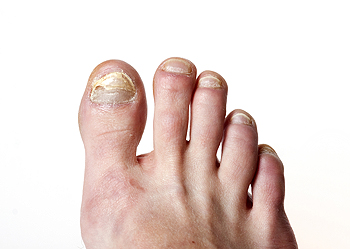 Toenail fungus is a foot condition that can be unsightly. Patients who have this ailment are often embarrassed by the appearance of their feet. It is considered to be contagious, and the fungus that causes the infection is found in public swimming pools, shower room floors, and surrounding areas. The toenail that is most likely to be affected is on the big toe, and one of the first symptoms can be the toenail turning yellow or white. The nail may gradually crumble and lift, and in severe cases, may fall off. If you have toenail fungus, it is strongly suggested that you speak to a podiatrist who can recommend the best treatment option for you.
Toenail fungus is a foot condition that can be unsightly. Patients who have this ailment are often embarrassed by the appearance of their feet. It is considered to be contagious, and the fungus that causes the infection is found in public swimming pools, shower room floors, and surrounding areas. The toenail that is most likely to be affected is on the big toe, and one of the first symptoms can be the toenail turning yellow or white. The nail may gradually crumble and lift, and in severe cases, may fall off. If you have toenail fungus, it is strongly suggested that you speak to a podiatrist who can recommend the best treatment option for you.
If left untreated, toenail fungus may spread to other toenails, skin, or even fingernails. If you suspect you have toenail fungus it is important to seek treatment right away. For more information about treatment, contact one of our podiatrists of PA Foot & Ankle Associates. Our doctors can provide the care you need to keep you pain-free and on your feet.
Symptoms
- Warped or oddly shaped nails
- Yellowish nails
- Loose/separated nail
- Buildup of bits and pieces of nail fragments under the nail
- Brittle, broken, thickened nail
Treatment
If self-care strategies and over-the-counter medications does not help your fungus, your podiatrist may give you a prescription drug instead. Even if you find relief from your toenail fungus symptoms, you may experience a repeat infection in the future.
Prevention
In order to prevent getting toenail fungus in the future, you should always make sure to wash your feet with soap and water. After washing, it is important to dry your feet thoroughly especially in between the toes. When trimming your toenails, be sure to trim straight across instead of in a rounded shape. It is crucial not to cover up discolored nails with nail polish because that will prevent your nail from being able to “breathe”.
In some cases, surgical procedure may be needed to remove the toenail fungus. Consult with your podiatrist about the best treatment options for your case of toenail fungus.
If you have any questions, please feel free to contact one of our offices located in Allentown, Easton, Northampton, and Chew Street in Allentown, PA . We offer the newest diagnostic and treatment technologies for all your foot care needs.
Toenail Fungus
Toenail fungus is a frustrating problem that affects many people. It can be persistent and hard to get rid of. As many different types of fungi are present throughout the environment, it is very easy to contract toenail fungus.
The feet are especially susceptible to toenail fungus because shoes and socks create the ideal dark and moist environment that fungal infections thrive in. While fungal infections of the nail plate are quite common, if left untreated they can spread beyond the toenail and into the skin and other parts of the body.
Signs of toenail fungus include a thickened nail that has become yellow or brown in color, a foul smell, and debris beneath the nail. The toe may become painful due to the pressure of a thicker nail or the buildup of debris.
Treatment for toenail fungus is most effective during the early stages of an infection. If there is an accumulation of debris beneath the nail plate, an ingrown nail or a more serious infection can occur. While each treatment varies between patients, your podiatrist may prescribe you oral medications, topical liquids and creams, or laser therapy. To determine the best treatment process for you, be sure to visit your podiatrist at the first signs of toenail fungus.
